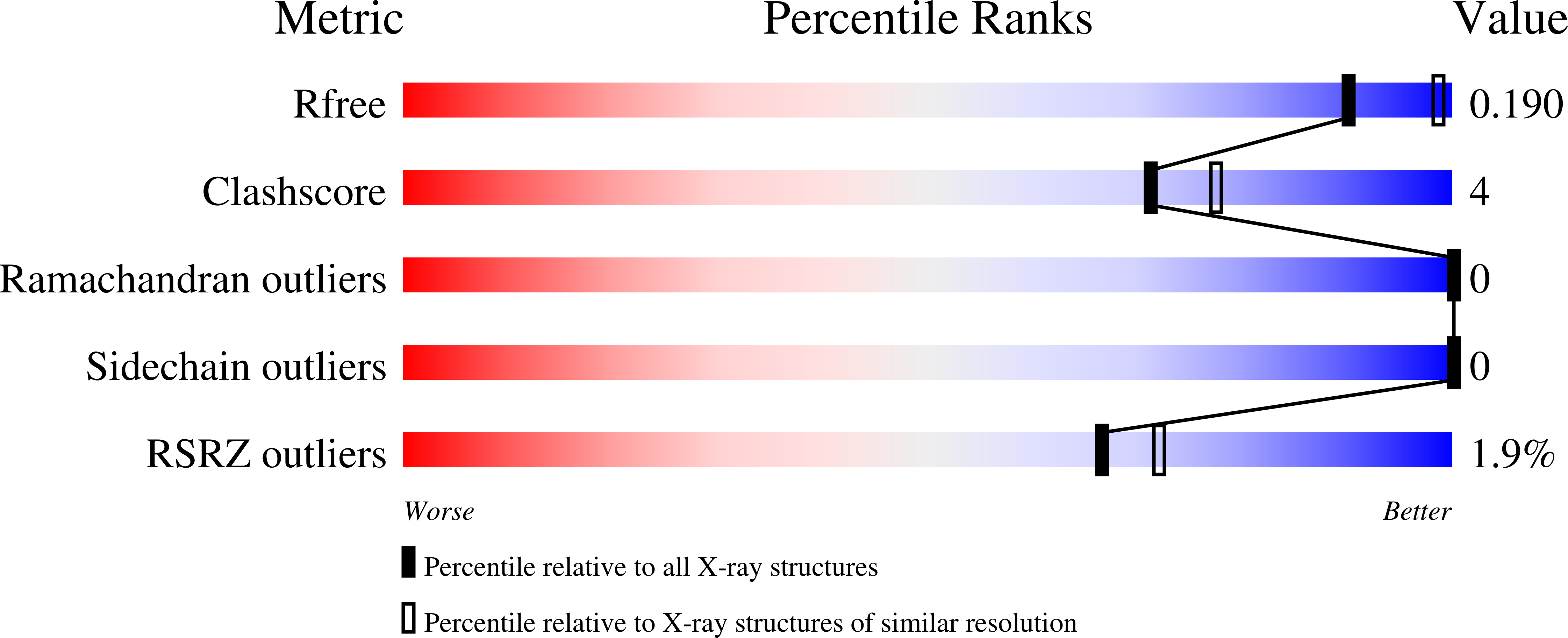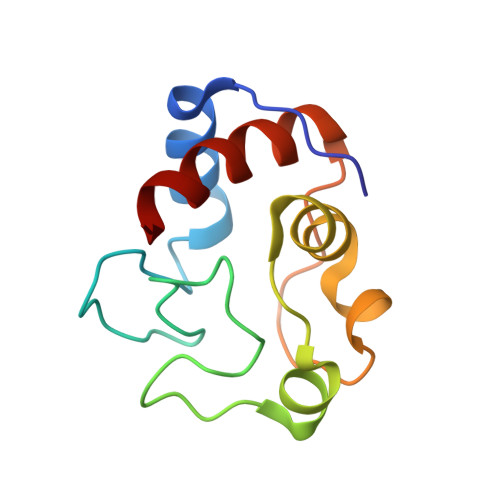Tuning Protein Frameworks via Auxiliary Supramolecular Interactions.
Engilberge, S., Rennie, M.L., Dumont, E., Crowley, P.B.(2019) ACS Nano 13: 10343-10350
- PubMed: 31490058
- DOI: https://doi.org/10.1021/acsnano.9b04115
- Primary Citation of Related Structures:
6GDA, 6RSI, 6RSJ, 6RSK, 6RSL - PubMed Abstract:
Protein crystals with their precise, periodic array of functional building blocks have potential applications in biomaterials, sensing, and catalysis. This paper describes how a highly porous crystalline framework of a cationic redox protein and an anionic macrocycle can be modulated by a small cationic effector. Ternary composites of protein (¡«13 kDa), calix[8]arene (¡«1.5 kDa), and effector (¡«0.2 kDa) formed distinct crystalline architectures, dependent on the effector concentration and the crystallization technique. A combination of X-ray crystallography and density functional theory (DFT) calculations was used to decipher the framework variations, which appear to be dependent on a calixarene conformation change mediated by the effector. This "switch" calixarene was observed in three states, each of which is associated with a different interaction network. Two structures obtained by co-crystallization with the effector contained an additional protein "pillar", resulting in framework duplication and decreased porosity. These results suggest how protein assembly can be engineered by supramolecular host-guest interactions.
Organizational Affiliation:
School of Chemistry , National University of Ireland Galway , University Road , Galway H91 TK33 , Ireland.





















